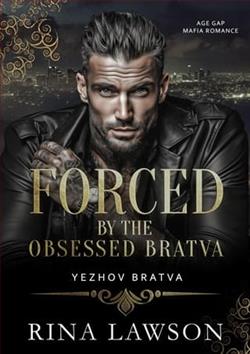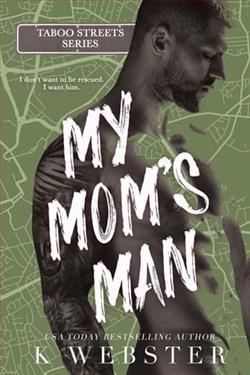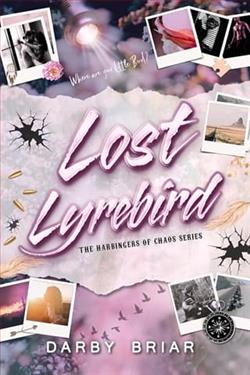Page 40 of The Hundred Loves of Juliet
“Okay…” I do as he says, keeping eye contact the whole time so he knows when I’ve satisfied his request.
He also breathes in and lets out a long, possibly too forceful exhale. It seems he needs the meditative pause more than I do.
Then he turns the handle and pushes the heavy door open.
I step inside as he flips on the lights.
It’s an art gallery.
And all the paintings are of characters and scenes from the stories I’ve written.
HELENE
“Wh-what is this?”
Trembling, I spin, gaze darting from one painting to another.
The closest one is a medieval portrait of a teenage girl, in the exact same costume I wore for my role of Juliet—a long yellow gown with wide, ribbon-hemmed sleeves, a bonnet-like hood over her hair, and silk slippers. How can that be? Mom made my costume for me, and as far as I know, she didn’t do any historical research. Did she come across this painting online and copy it?
On another wall, there’s a portrait of a tanned woman with piercing gray eyes and a hawkish nose, riding a camel in the desert. Her features, the way she holds herself proud and upright on the saddle, and her colorful woven headwrap in reds, purples, and oranges match with my character Mary Jo Phoenix, an intrepid explorer, who, along with her husband, Nolan, crossed the Sahara on camelback in search of the mythical Land of Gold. She was the dreamer; he was the logistics man who could make her fantastical quests come true. The bronze plaque on the frame dates this scene to 1711, exactly when my vignette is set.
There’s a painting of a stout waitress with a cuckoo clock behind her, showing the time as exactly noon. The plaque says 1561. “Clara in Switzerland,” I gasp in recognition.
Then there’s eighteenth-century Amélie Laurent with her pretty blond ringlets and parasol, strolling through the gardens of Versailles. And a flapper girl dancing in a nightclub in Shanghai in 1920; she looks just like I described my character Kitri Wagner.
Oh god. My stomach flips frantically, a fish without water. “How is this possible?” I whisper.
I don’t recognize all of the paintings, but as I skim them, a few more stand out, corresponding with vignettes I wrote.
I walk up to a painting of a horse race; the plaque puts the scene in New York, 1839. The men wear waistcoats and trousers and top hats. The women show off high-waisted gowns and carry dainty parasols. On the right side of the painting, one couple faces the artist instead of the horses.
The man is Sebastien, but old-timey.
“I know that scene, too.” My knees go weak; I have to sit down on one of the leather benches in the middle of the gallery.
“You remember that?” Sebastien says, eyes wide.
“What do you mean,remember?” I’m dialed up to full freak-out mode now. I made up that horse race scene during my first year of grad school, when I was renting a room near the Northwestern University equestrian team’s stables. I recall how pleased I was about the fancy hat I wrote for my character—blue feathers, lavender roses. The same hat as in the painting in front of me.
“It’s another one of my stories,” I say, voice quivering. “No one except my mom and sister have ever read them, though. How can these paintings exist?” I turn to stare at Sebastien. “How doyouexist?”
My nerves are beginning to short-circuit from too much input.
Sebastien sits down on a bench a few yards away, as if making sure to give me space to breathe. “Do you know the story of Romeo and Juliet?”
“Of course.” We already established at the locked door that I knew what the tenth of July signified.
“How does their story end?” he asks.
Sebastien’s patient, teacher-like tone rubs me the wrong way. This isnotthe time for a literature lesson. “Juliet takes a sleeping potion that fakes her death,” I snap. “Romeo hears the news and, distraught, buys poison. He drinks it in the Capulet tomb so he can die next to Juliet’s body. But then she wakes up and finds him dead, so she kills herself with his dagger. But how is that relevant?”
“Do you remember that you said you knew me?”
I let out an exasperated huff. “Please stop asking me questions. I can’t handle the Socratic method right now. Just tell me what this is all about because I’m about to lose my mind.”
“All right.” He gets up and crosses the gallery, removes a gilt frame from the wall, and brings it over to me, setting it down on my bench. It’s an oil painting of act 5, scene 3—Juliet lying asleep in the Capulets’ tomb. Shockingly, she is wearing a white gown nearly indistinguishable from the one I wore for this scene in my middle school play. That’s two identical costumes, in paintings I’ve never seen before. My stomach drops like I’m free-falling on a roller coaster.
“You say you’ve daydreamed about me for a long time,” Sebastien says. “But while you thought you made up all those adventures, I think you were actually remembering past lives. Because the places that you mentioned during breakfast—and in these paintings—are places you and I have been together.”















